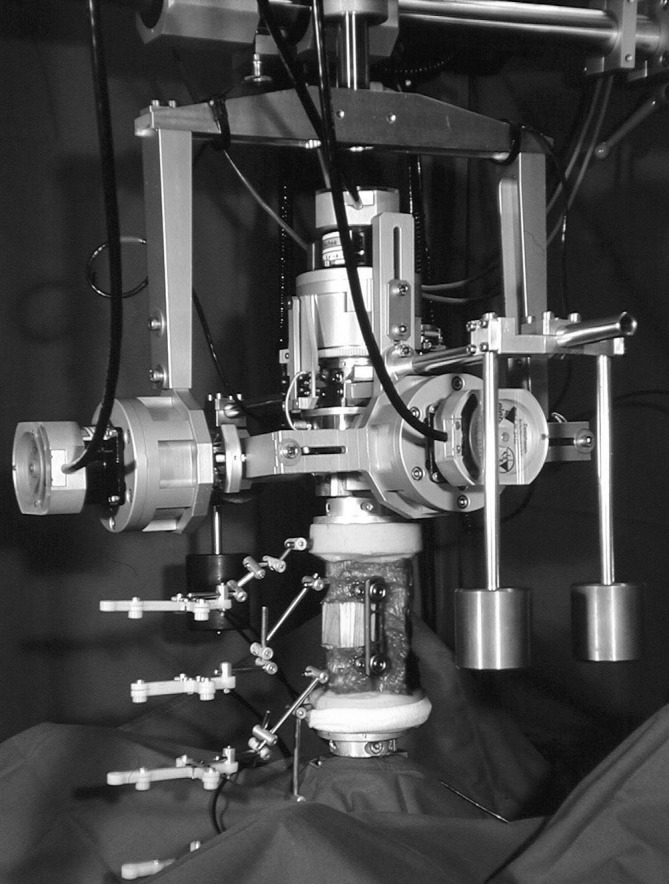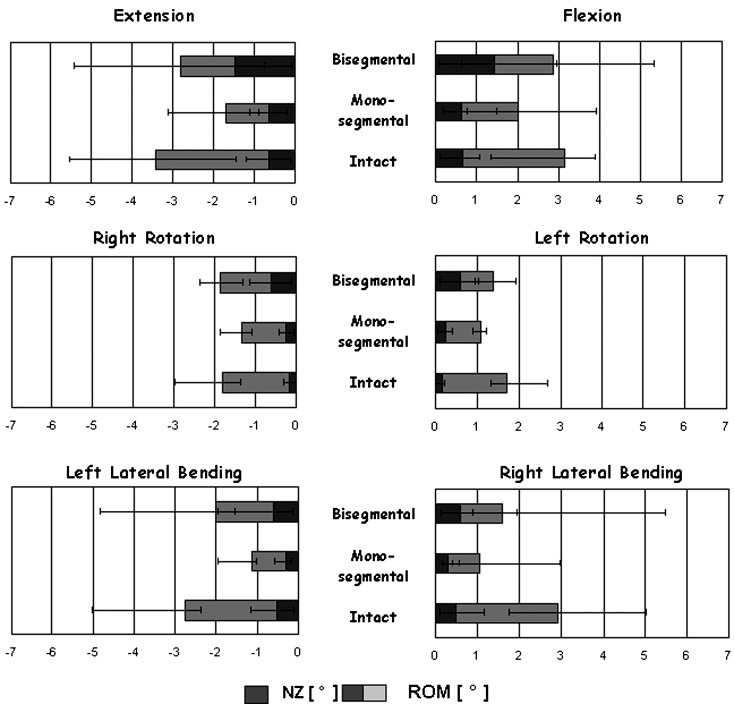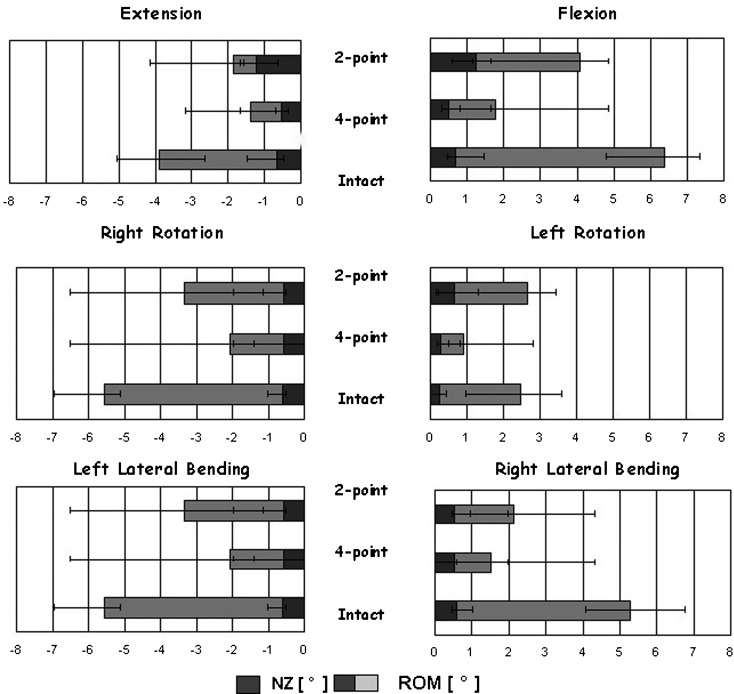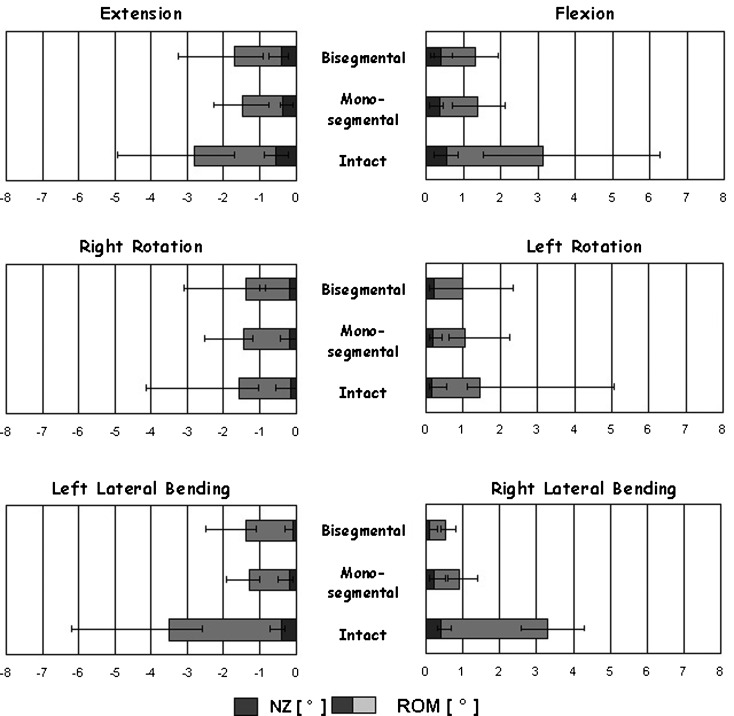Eur Spine J (2005) 10.1007/s00586-004-0837-7
Figure 2 was inadvertently omitted and Fig. 5 appeared twice (as Fig. 4 und Fig. 5). The correctly numbered figures are given here with their legends.
Fig. 1.

Spine tester
Fig. 2a–c.

Test sequence. a Using anterior two-point stabilisation with improved screw holding strength, the study investigated whether two-point stabilisation, which is easier to implant endoscopically, provides sufficient biomechanical stability in both mono- and bisegmental fixation. HMA System (Aesculap, Tuttlingen, Germany). b The increase in stability with anterior four-point stabilisation compared to two-point stabilisation was investigated in a model of bisegmental stabilisation. US System/ Ventrofix (Stratec, Oberdorf, Switzerland). c Finally, mono- and bisegmental stabilisation during instrumentation with four-point stabilisation that can be implanted completely endoscopically was compared biomechanically(3–5, 10, 20–25). MACS TL System (Aesculap, Tuttlingen, Germany)
Fig. 3.
Median and ROM (degree) and NZ (degree) of the mono- or bisegmental T11–T12/L1 segment stabilised with the HMA System (two-point stabilisation) in flexion/extension, rotation, and lateral bending
Fig. 4.
Median and ROM (degree) and NZ (degree) of the bisegmental T11–T12/L1 segment stabilised with the US system (two-point stabilisation) or Ventrofix (four-point stabilisation) in flexion/extension, rotation, and lateral bending
Fig. 5.
Median and ROM (degree) and NZ (degree) of the mono- or bisegmental T11–T12/L1 segment stabilised with the MACS TL System (four-point stabilisation) in flexion/extension, rotation, and lateral bending
Footnotes
The online version of the original article can be found at http://dx.doi.org/10.1007/s00586-004-0837-7





